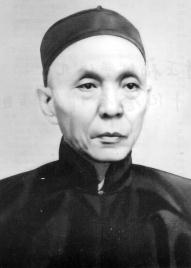Our website is made possible by displaying online advertisements to our visitors.
Please consider supporting us by disabling your ad blocker.
Wong Nai Siong
This article includes a list of general references, but it lacks sufficient corresponding inline citations. (January 2013) |
Wong Nai Siong | |||||||||||||||||||||
|---|---|---|---|---|---|---|---|---|---|---|---|---|---|---|---|---|---|---|---|---|---|
 | |||||||||||||||||||||
| Born | 1849 Minqing County, Fuzhou, China | ||||||||||||||||||||
| Died | 22 September 1924 (aged 74–75) Minqing, Fuzhou, China | ||||||||||||||||||||
| Resting place | Minqing County 26°06′50.61″N 118°46′43.59″E / 26.1140583°N 118.7787750°E | ||||||||||||||||||||
| Nationality | Chinese | ||||||||||||||||||||
| Education | scholar | ||||||||||||||||||||
| Occupation(s) | revolutionary leader, educator | ||||||||||||||||||||
| Political party | Tongmenghui | ||||||||||||||||||||
| Spouse(s) | First wife - Mdm Xie; Second wife - Mdm Qian | ||||||||||||||||||||
| Relatives | Wong Nai Muo (younger brother), Lim Boon Keng (son-in-law), Wu Lien-teh (son-in-law), Wu Weiran (son-in-law), Robert Lim (grandson) | ||||||||||||||||||||
| Chinese name | |||||||||||||||||||||
| Traditional Chinese | 黃乃裳 | ||||||||||||||||||||
| Simplified Chinese | 黄乃裳 | ||||||||||||||||||||
| |||||||||||||||||||||
Wong Nai Siong (simplified Chinese: 黄乃裳; traditional Chinese: 黃乃裳; Pe̍h-ōe-jī: N̂g Nái-siông; Bàng-uâ-cê: Uòng Nāi-siòng) (1849–22 September 1924) was a Chinese revolutionary leader and educator from Minqing county in Fuzhou, Fujian province, China. He served in The Methodist Episcopal Church for many years and participated in the "Ten Thousand Word Memorial" or the "Memorial of the Examination Candidates" Petition (Gongche Shangshu movement) in 1895.[1] He also took part in the Hundred Days' Reform in 1898[1] and the 1911 Xinhai Revolution[2] which resulted in the founding of the Republic of China. Wong led people from Fujian province to migrate to Sibu, Sarawak.[3]
- ^ a b Pang, Anne (2011). Huang Naishang: a Chinese Christian reformer in late Qing and early republican China (1st ed.). Sibu, Sarawak, Malaysia: Sibu Foochow Association. pp. 43, 73. ISBN 978-983-42523-4-2. OCLC 793169651.
- ^ Pang, Anne (2011). Huang Naishang: a Chinese Christian reformer in late Qing and early republican China (1st ed.). Sibu, Sarawak, Malaysia: Sibu Foochow Association. pp. 91–117. ISBN 978-983-42523-4-2. OCLC 793169651.
- ^ Pang, Anne (2011). Huang Naishang: a Chinese Christian reformer in late Qing and early republican China. Sibu, Sarawak: Sibu Foochow Association. pp. 210–337. ISBN 978-983-42523-4-2. OCLC 793169651.
Previous Page Next Page


